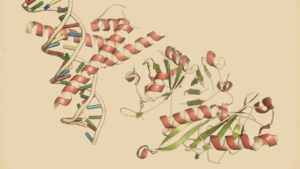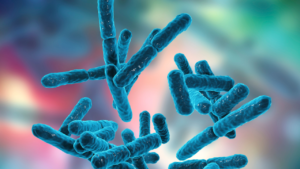Secrets of Dietary Fiber on Metabolic Health
Explore the crucial role of dietary fiber on metabolic health. Dive into how it benefits gut microbiota and disease prevention.

The complex connection between dietary fiber and gut health is fundamental in modern nutrition.
This article examines how dietary fiber significantly impacts gut microbiota, a crucial element in maintaining overall well-being.
We will investigate the dynamic relationship between fiber consumption and the makeup of gut microbiota, emphasizing the role of short-chain fatty acids which are essential for promoting health.
Additionally, the article discusses the broader influence of dietary fiber on metabolic health and its potential for preventing metabolic diseases.
By combining scientific insights and dietary strategies, we aim to provide a comprehensive understanding of how dietary fiber not only serves as a nutrient but also plays a vital role in promoting metabolic health.
Main Findings
- Importance of Dietary Fiber: Fiber is important for health but many modern diets lack enough fiber, leading to more gut-related diseases like inflammatory bowel disease, obesity, type II diabetes, and metabolic syndrome.
- Dietary Fiber and Gut Microbiota: Dietary fiber affects the gut's microbial community and overall gut health by providing fermentation substrates for specific microbes.
- Microbial Degradation of Dietary Fiber: Microbial enzymes break down dietary fiber in the large intestine with the help of primary degraders and secondary fermenters. They work together to turn fibers into beneficial short-chain fatty acids.
- Production and Role of SCFAs: Dietary fiber fermentation by gut bacteria produces SCFAs, which have health benefits like lower cholesterol and better glucose control. The type of fiber and gut bacteria present affect the amount and variety of SCFAs produced.
- Dietary Fiber in Metabolic Regulation: Dietary fiber, through the SCFAs produced during fermentation, plays a pivotal role in regulating glucose and lipid metabolism. This is crucial for preventing diseases like obesity, type II diabetes, and cardiovascular diseases Get "Smart Citations"☚
(hover to see more details)
. - Integration of Dietary Fiber in Modern Diets: The article highlights the need for incorporating dietary fiber into contemporary diets to address the low fiber intake in industrialized societies and its link to a rise in metabolic diseasesGet "Smart Citations"☚
(hover to see more details)
. - Potential for Dietary Fiber as a Therapeutic Intervention: Dietary fiber's impact on gut health and metabolic regulation underscores its potential as a therapeutic tool for managing metabolic disorders. Future research should focus on understanding the specific actions of different fibers and determining the most effective consumption patterns for managing and preventing metabolic diseases Get "Smart Citations"☚
(hover to see more details)
.
I. Introduction
Importance of Dietary Fiber
Recognized as a crucial health-promoting component, dietary fiber plays a vital nutritional role.
Despite its benefits, there's been a marked decline in fiber intake due to modern dietary practices, particularly the adoption of low-fiber “Western diets” prevalent in industrialized countries ✅ Trusted Source
➤ Go to source
Dietary fiber, gut microbiota, and metabolic regulation—current status in human randomized trials. Nutrients, 12(3), 859.
➤ Get "Smart Citations"
(hover to see more details)
.
This dietary shift is closely associated with an increased occurrence of various gut-related diseases ✅ Trusted Source
➤ Go to source
Dietary gut microbial metabolites, short-chain fatty acids, and host metabolic regulation. Nutrients, 7(4), 2839-2849.
➤ Get "Smart Citations"
(hover to see more details)
.
Notably, these conditions are characterized by metabolic imbalances like insulin resistance and abnormal glucose and cholesterol levels.
Moreover, changes in gut microbial patterns in these populations suggest a direct relationship between diet, gut microbiota, and disease.
The consumption of dietary fiber is thought to potentially counteract these adverse effects by stimulating microbial fermentation and producing short-chain fatty acids (SCFA), thereby ameliorating glucose and lipid imbalances in those suffering from metabolic dysfunctions ✅ Trusted Source
➤ Go to source
High-fiber diets attenuate emphysema development via modulation of gut microbiota and metabolism. Scientific Reports, 11(1).
➤ Get "Smart Citations"
(hover to see more details)
✅ Trusted Source
➤ Go to source
High-dietary fiber intake alleviates antenatal obesity-induced postpartum depression: roles of gut microbiota and microbial metabolite short-chain fatty acid involved. Journal of Agricultural and Food Chemistry, 68(47), 13697-13710.
➤ Get "Smart Citations"
(hover to see more details)
.
Reduction in Fiber Consumption in Modern Diets
In the context of modern eating habits, particularly in developed nations, there has been a significant decline in fiber consumption.
This trend has contributed to a surge in various gut disorders, including inflammatory bowel disease, obesity, type II diabetes mellitus, and metabolic syndrome ✅ Trusted Source
➤ Go to source
Diet and microbiota linked in health and disease. Food &Amp; Function, 9(2), 688-704.
➤ Get "Smart Citations"
(hover to see more details)
✅ Trusted Source
➤ Go to source
High-fiber, whole-food dietary intervention alters the human gut microbiome but not fecal short-chain fatty acids. mSystems, 6(2).
➤ Get "Smart Citations"
(hover to see more details)
✅ Trusted Source
➤ Go to source
Associations between consumption of dietary fibers and the risk of type 2 diabetes, hypertension, obesity, cardiovascular diseases, and mortality in chinese adults: longitudinal analyses from the china health and nutrition survey. Nutrients, 14(13), 2650.
➤ Get "Smart Citations"
(hover to see more details)
.
The shift towards diets lacking in fiber has not only led to increased metabolic diseases but also caused significant alterations in gut microbiota, underscoring the strong link between dietary fiber intake, gut health, and overall metabolic wellbeing ✅ Trusted Source
➤ Go to source
Benefits of short-chain fatty acids and their receptors in inflammation and carcinogenesis. Pharmacology &Amp; Therapeutics, 164, 144-151.
➤ Get "Smart Citations"
(hover to see more details)
.
Consequently, the move away from traditional fiber-rich diets highlights the need for a renewed focus on dietary fiber to maintain gut health and metabolic balance ✅ Trusted Source
➤ Go to source
Gut microbiome variation modulates the effects of dietary fiber on host metabolism. Microbiome, 9(1).
➤ Get "Smart Citations"
(hover to see more details)
✅ Trusted Source
➤ Go to source
Review: effects of dietary fiber levels and composition on the intestinal health of finishing pigs. Open Journal of Animal Sciences, 11(03), 384-398.
➤ Get "Smart Citations"
(hover to see more details)
.
II. Dietary Fiber and Gut Microbiota
Influence on Microbiota Composition
Dietary fiber significantly influences the composition, diversity, and richness of the microbiome by providing a variety of substrates for fermentation ✅ Trusted Source
➤ Go to source
Dietary fiber, gut microbiota, and metabolic regulation—current status in human randomized trials. Nutrients, 12(3), 859.
➤ Get "Smart Citations"
(hover to see more details)
✅ Trusted Source
➤ Go to source
Fiber and prebiotic interventions in pediatric inflammatory bowel disease: what role does the gut microbiome play?. Nutrients, 12(10), 3204.
➤ Get "Smart Citations"
(hover to see more details)
.
These substrates are utilized by specific microbial species equipped with the necessary enzymes to break down complex carbohydrates ✅ Trusted Source
➤ Go to source
Comparative effect of 22 dietary sources of fiber on gut microbiota of healthy humans in vitro. Frontiers in Nutrition, 8.
➤ Get "Smart Citations"
(hover to see more details)
.
As a result, dietary fiber intake shapes the nutritional environment in the large intestine, promoting the expansion of diverse microbial populations that are essential for gut health.
Role in Microbial Diversity and Richness
The diversity and richness of the gut microbiota are directly impacted by the range of fibers available for microbial fermentation ✅ Trusted Source
➤ Go to source
Fiber and prebiotic interventions in pediatric inflammatory bowel disease: what role does the gut microbiome play?. Nutrients, 12(10), 3204.
➤ Get "Smart Citations"
(hover to see more details)
.
Each fiber type offers unique nutritional benefits, catering to different microbial species.
This not only fosters a varied microbial ecosystem but also enhances the gut's resilience and functional stability.
Such diversity is vital in maintaining a healthy gut microbiota balance.
Fermentation Substrates for Specific Microbial Species
Various dietary fibers act as specific fermentation substrates for different gut microbial species ✅ Trusted Source
➤ Go to source
Comparative effect of 22 dietary sources of fiber on gut microbiota of healthy humans in vitro. Frontiers in Nutrition, 8.
➤ Get "Smart Citations"
(hover to see more details)
.
Through the fermentation process, these fibers facilitate the growth of certain microbes, thereby shaping the gut's microbial community.
The inclusion of diverse fiber types in the diet is crucial for nurturing a broad spectrum of beneficial microbes, which play a key role in promoting overall gut health and wellbeing.
III. Microbial Degradation of Dietary Fiber
Enzymatic Processes by Microbial Species
The degradation of dietary fiber in the large intestine involves a diverse array of microbial enzymes, each adapted to specific fiber types.
The enzymatic breakdown of these fibers into short-chain fatty acids (SCFAs) often requires multiple steps and a variety of microbes ✅ Trusted Source
➤ Go to source
Dietary fiber, gut microbiota, and metabolic regulation—current status in human randomized trials. Nutrients, 12(3), 859.
➤ Get "Smart Citations"
(hover to see more details)
.
Key players in this process are the primary degraders or keystone species, bacteria that specialize in the initial breakdown of fibers.
In contrast, secondary fermenters or cross-feeders, such as Bacteroides thetaiotaomicron, play a supportive role, benefiting from the primary degraders' efforts.
These secondary fermenters exhibit remarkable adaptability, encoding enzymes capable of degrading a broad spectrum of dietary fibers ✅ Trusted Source
➤ Go to source
Keystone taxa as drivers of microbiome structure and functioning. Nature Reviews Microbiology, 16(9), 567-576.
➤ Get "Smart Citations"
(hover to see more details)
✅ Trusted Source
➤ Go to source
Some are more equal than others. Gut Microbes, 4(3), 236-240.
➤ Get "Smart Citations"
(hover to see more details)
.
Role of Primary and Secondary Fermenters
In the gut's ecosystem, the decomposition of dietary fiber is a synergistic process involving both primary and secondary fermenters.
The primary degraders, equipped with a comprehensive set of enzymes, initiate the breakdown of complex fibers.
This initial degradation paves the way for secondary fermenters, which utilize the intermediate products from primary fermentation ✅ Trusted Source
➤ Go to source
Keystone taxa as drivers of microbiome structure and functioning. Nature Reviews Microbiology, 16(9), 567-576.
➤ Get "Smart Citations"
(hover to see more details)
✅ Trusted Source
➤ Go to source
Nematode grazing promotes bacterial community dynamics in soil at the aggregate level. The ISME Journal, 11(12), 2705-2717.
➤ Get "Smart Citations"
(hover to see more details)
.
In the context of the gut microbiome, Bifidobacterium longum ssp infantis and Akkermansia mucuniphila have been identified as keystone bacteria ✅ Trusted Source
➤ Go to source
Microbiome first medicine in health and safety..
➤ Get "Smart Citations"
(hover to see more details)
.
These secondary fermenters further simplify the fibers, contributing to the complete degradation process.
This collaboration between the two types of fermenters is crucial, as it ensures the full breakdown of dietary fibers into beneficial metabolites, such as SCFAs, thereby supporting gut health.
IV. Production and Role of Short-Chain Fatty Acids (SCFAs)
Production Through Microbial Fermentation
The fermentation of dietary fiber by gut microbiota yields significant health benefits like lower cholesterol and improved glucose control ✅ Trusted Source
➤ Go to source
Dietary gut microbial metabolites, short-chain fatty acids, and host metabolic regulation. Nutrients, 7(4), 2839-2849.
➤ Get "Smart Citations"
(hover to see more details)
.
This process profoundly influences both the gut microbiota and the profile of microbial-derived metabolites in the intestine.
Short-chain fatty acids (SCFAs), namely butyrate, acetate, and propionate, are the primary products of this fermentation.
Butyrate is typically generated through the classical pathway or the butyryl CoA:acetate CoA transferase pathway, while acetate is formed from pyruvate via the Wood–Ljungdahl pathway or acetyl CoA synthesis.
Propionate, conversely, is produced through various pathways including the succinate, acrylate, or propanediol pathways.
Intriguingly, these SCFAs can undergo further transformations, such as the conversion of acetate to butyrate through microbial cross-feeding ✅ Trusted Source
➤ Go to source
Dietary gut microbial metabolites, short-chain fatty acids, and host metabolic regulation. Nutrients, 7(4), 2839-2849.
➤ Get "Smart Citations"
(hover to see more details)
.
Dependence on Fiber Type and Microbiota Species
The diversity and quantity of SCFAs produced hinge on the type of dietary fiber consumed and the specific microbiota species present in the colon.
Consequently, individuals' responses to dietary fiber, from both a microbial and metabolic standpoint, are highly personalized and diverse.
Most SCFAs are passively absorbed in the colonic lumen, with only a small fraction (5–10%) being excreted in feces ✅ Trusted Source
➤ Go to source
Dietary gut microbial metabolites, short-chain fatty acids, and host metabolic regulation. Nutrients, 7(4), 2839-2849.
➤ Get "Smart Citations"
(hover to see more details)
.
Although circulating SCFA concentrations are generally low, these potent signaling molecules play a crucial role in regulating a myriad of vital bodily functions, especially in the gut.
Role in Health and Metabolism
SCFAs, particularly butyrate, acetate, and propionate, are instrumental in maintaining health and regulating metabolism.
These fatty acids contribute to lowering cholesterol, enhancing glucose control, and impacting various metabolic pathways.
Their role extends beyond gut health, as they serve as signaling molecules that influence energy metabolism, immune responses, and inflammation processes.
The generation of SCFAs underscores the health benefits of dietary fiber, highlighting its importance in preventing and managing conditions such as obesity, type II diabetes, and cardiovascular diseases ✅ Trusted Source
➤ Go to source
Dietary gut microbial metabolites, short-chain fatty acids, and host metabolic regulation. Nutrients, 7(4), 2839-2849.
➤ Get "Smart Citations"
(hover to see more details)
.
V. Dietary Fiber on Metabolic Health
Influence on Glucose Metabolism
Dietary fiber, through the SCFAs produced during its fermentation in the colon, plays a pivotal role in regulating glucose metabolism in humans ✅ Trusted Source
➤ Go to source
Short chain fatty acids in human gut and metabolic health. Beneficial Microbes, 11(5), 411-455.
➤ Get "Smart Citations"
(hover to see more details)
.
This regulation, primarily mediated by insulin, is crucial for preventing diseases such as obesity, type II diabetes mellitus (T2DM), metabolic syndrome, and cardiovascular diseases (CVD) ✅ Trusted Source
➤ Go to source
Microbiota-generated metabolites promote metabolic benefits via gut-brain neural circuits. Cell, 156(1-2), 84-96.
➤ Get "Smart Citations"
(hover to see more details)
✅ Trusted Source
➤ Go to source
Short-chain fatty acids protect against high-fat diet–induced obesity via a pparγ-dependent switch from lipogenesis to fat oxidation. Diabetes, 64(7), 2398-2408.
➤ Get "Smart Citations"
(hover to see more details)
.
Long-term fiber consumption is associated with reduced risks of CVD and T2DM.
SCFAs, particularly propionate, not only activate receptors like GPR43 in the colon to stimulate insulin secretion but also enhance glucose sensitivity in β-cells ✅ Trusted Source
➤ Go to source
Short-chain fatty acids and ketones directly regulate sympathetic nervous system via g protein-coupled receptor 41 (gpr41). Proceedings of the National Academy of Sciences, 108(19), 8030-8035.
➤ Get "Smart Citations"
(hover to see more details)
.
Furthermore, they modulate hepatic gluconeogenesis, a process linked to insulin resistance and chronic gut diseases, thus illustrating their significant role in maintaining healthy glucose levels.
Impact on Lipid Metabolism
The influence of dietary fiber on lipid metabolism, facilitated by SCFAs, is predominantly observed in the liver.
These fatty acids activate receptors such as GPR41 and GPR43, and the PPAR-γ, a key regulator of lipid metabolism ✅ Trusted Source
➤ Go to source
Short-chain fatty acids and ketones directly regulate sympathetic nervous system via g protein-coupled receptor 41 (gpr41). Proceedings of the National Academy of Sciences, 108(19), 8030-8035.
➤ Get "Smart Citations"
(hover to see more details)
.
Their role includes promoting lipogenesis and reducing circulating fatty acid concentrations, a process believed to be mediated by GPR43.
Notably, SCFAs, particularly propionate, are known to enhance lipoprotein lipase activity in adipose tissue ✅ Trusted Source
➤ Go to source
Short-chain fatty acids protect against high-fat diet–induced obesity via a pparγ-dependent switch from lipogenesis to fat oxidation. Diabetes, 64(7), 2398-2408.
➤ Get "Smart Citations"
(hover to see more details)
.
Clinical studies have demonstrated that SCFA administration can markedly improve metabolic parameters in individuals with metabolic challenges, underscoring their potential in positively modulating lipid metabolism ✅ Trusted Source
➤ Go to source
The role of the gut microbiome in diabetes and obesity-related kidney disease. International Journal of Molecular Sciences, 22(17), 9641.
➤ Get "Smart Citations"
(hover to see more details)
✅ Trusted Source
➤ Go to source
Short-chain fatty acids: a soldier fighting against inflammation and protecting from tumorigenesis in people with diabetes. Frontiers in Immunology, 11.
➤ Get "Smart Citations"
(hover to see more details)
.
Role in Disease Prevention and Management
The production of SCFAs from dietary fiber is crucial in the prevention and management of metabolic diseases like obesity, T2DM, and CVD ✅ Trusted Source
➤ Go to source
Short-chain fatty acids: a soldier fighting against inflammation and protecting from tumorigenesis in people with diabetes. Frontiers in Immunology, 11.
➤ Get "Smart Citations"
(hover to see more details)
✅ Trusted Source
➤ Go to source
The role of short-chain fatty acids in the interplay between gut microbiota and diet in cardio-metabolic health. Gut Microbes, 13(1).
➤ Get "Smart Citations"
(hover to see more details)
✅ Trusted Source
➤ Go to source
Short-chain fatty acids and their association with signalling pathways in inflammation, glucose and lipid metabolism. International Journal of Molecular Sciences, 21(17), 6356.
➤ Get "Smart Citations"
(hover to see more details)
.
These SCFAs exert a broad influence on both glucose and lipid metabolism, thereby extending their impact beyond gut health to systemic effects crucial for overall health.
Regular consumption of dietary fiber, therefore, emerges as a key dietary strategy for maintaining metabolic health and warding off chronic metabolic diseases, highlighting the integral role of fiber in dietary interventions and disease management.
VI. Conclusion
Integration of Dietary Fiber in Modern Diets
The significance of dietary fiber in shaping gut microbiota and influencing metabolic health is unmistakably highlighted in this review.
Recognizing this, the incorporation of dietary fiber into contemporary diets emerges as not only beneficial but imperative.
The prevalent low fiber intake in industrialized societies is directly linked to a rise in metabolic diseases.
Addressing this through public health initiatives, educational efforts, and changes in food industry practices is essential.
Such actions promise not only to enhance individual health but also to yield widespread public health benefits.
Dietary Fiber as a Therapeutic Intervention in Metabolic Health Issues
The strong link between dietary fiber, gut health, and metabolic regulation underscores its potential as a therapeutic tool for managing metabolic disorders.
Leveraging dietary fiber in this way offers a natural, cost-effective, and accessible strategy to combat obesity, diabetes, and cardiovascular diseases.
Future research should delve into understanding the specific actions of different fibers and determining the most effective consumption patterns.
This could lead to more tailored dietary guidelines and innovative therapeutic approaches, enhancing the management and prevention of metabolic diseases.
FAQs
Why is dietary fiber important for metabolic health?
Can eating a lot of fiber boost your metabolism?
What role does dietary fiber play in good health?
What is the role of fiber in a balanced diet?
Review date not set.
How we reviewed this article:
Latest on:





